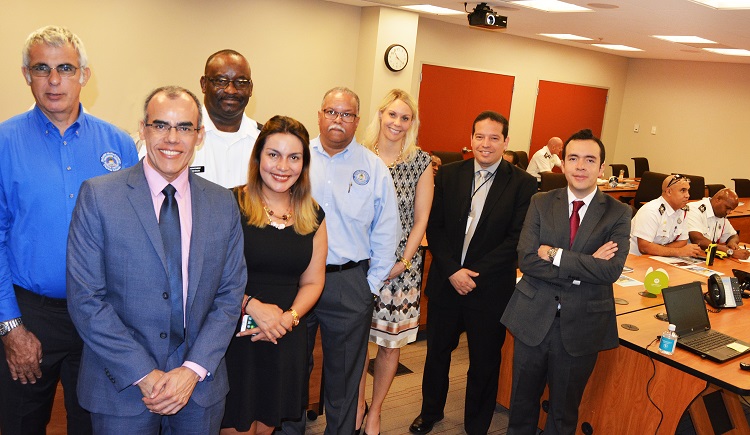
Modern communications was a core theme of the Cayman Islands’ “Tsunami Warning” exercise held on Tuesday, 21 March 2017, at the Government Administration Building.
The scenario was of a “nine-foot wave” hitting Little Cayman and Cayman Brac, then moving onto Grand Cayman.
Representatives of the Hazard Management Cayman Islands (HMCI) team attended, along with emergency responders and representatives other government agencies, including Department of Environment and the Health Services Authority.
HMCI worked with the new Utility Regulation and Competition Office (also known as “OfReg”), to implement the “mass alert” – part of an emergency notification system for these Islands. A national text was issued by telephone service providers, notifying the public of the “tsunami”.
Once the exercise was complete, a final text was sent with a “Survey Monkey” online survey; to which more than 1,300 people provided feedback on the exercise. The survey remains open for a few more days; to offer feedback visit: http://svy.mk/2noN1Mx
HMCI officials also used the opportunity to focus on the responses of national emergency agencies. Summarising Tuesday’s activities, HMCI Director McCleary Frederick said, “Some considerations in such an event would include immediate HMCI alerts, moving residents inland, away from shore and to higher ground or upper floors of buildings, and moving vessels to the safety of deeper water.”
Also during the tsunami exercise Motorola, a leading supplier of emergency telecommunications equipment, outlined the latest technology options. The company was recently awarded a tender to replace Government’s radio system with a state-of-the-art P25 system.
The new Motorola system will serve as a platform for future enhancements of Government communications for first-responders. It will include some of the technologies demonstrated on Tuesday, such as messaging and unit location-tracking. Final details of the contract are now being negotiated.
Modern land- and mobile-communications innovations, from drones and video capabilities, to remote-command stations, encryption and other new data capabilities, were showcased, alongside novel solutions to local needs.
Local public safety officers also heard about new broadband networks, the use of data (eg. images, video and localization), and current security challenges in the Caribbean.
Motorola’s new solutions for public-safety agencies they learned include predictive and reactive options, multiple data sources – such as radios, video/body cameras, social networks, online news, databases – and even crime pattern analyses.